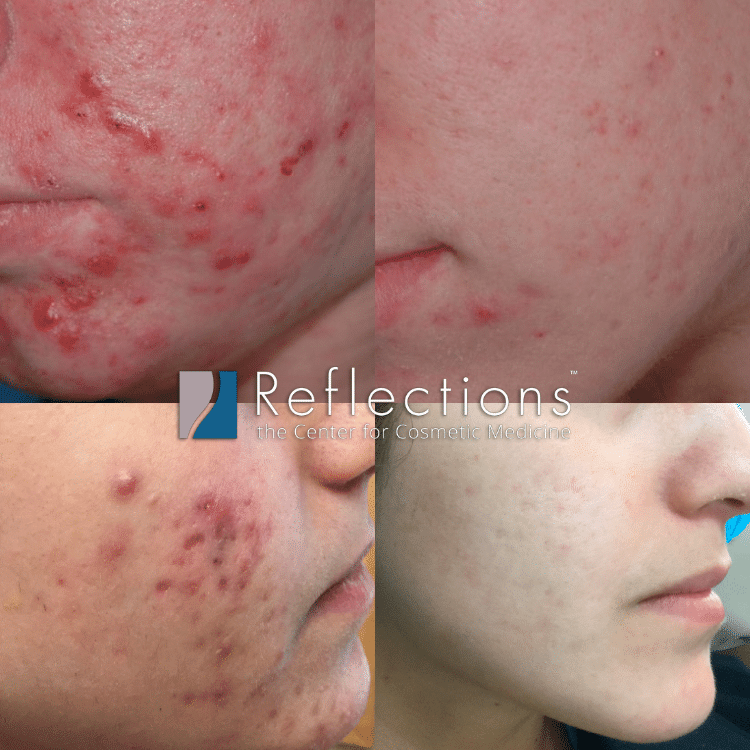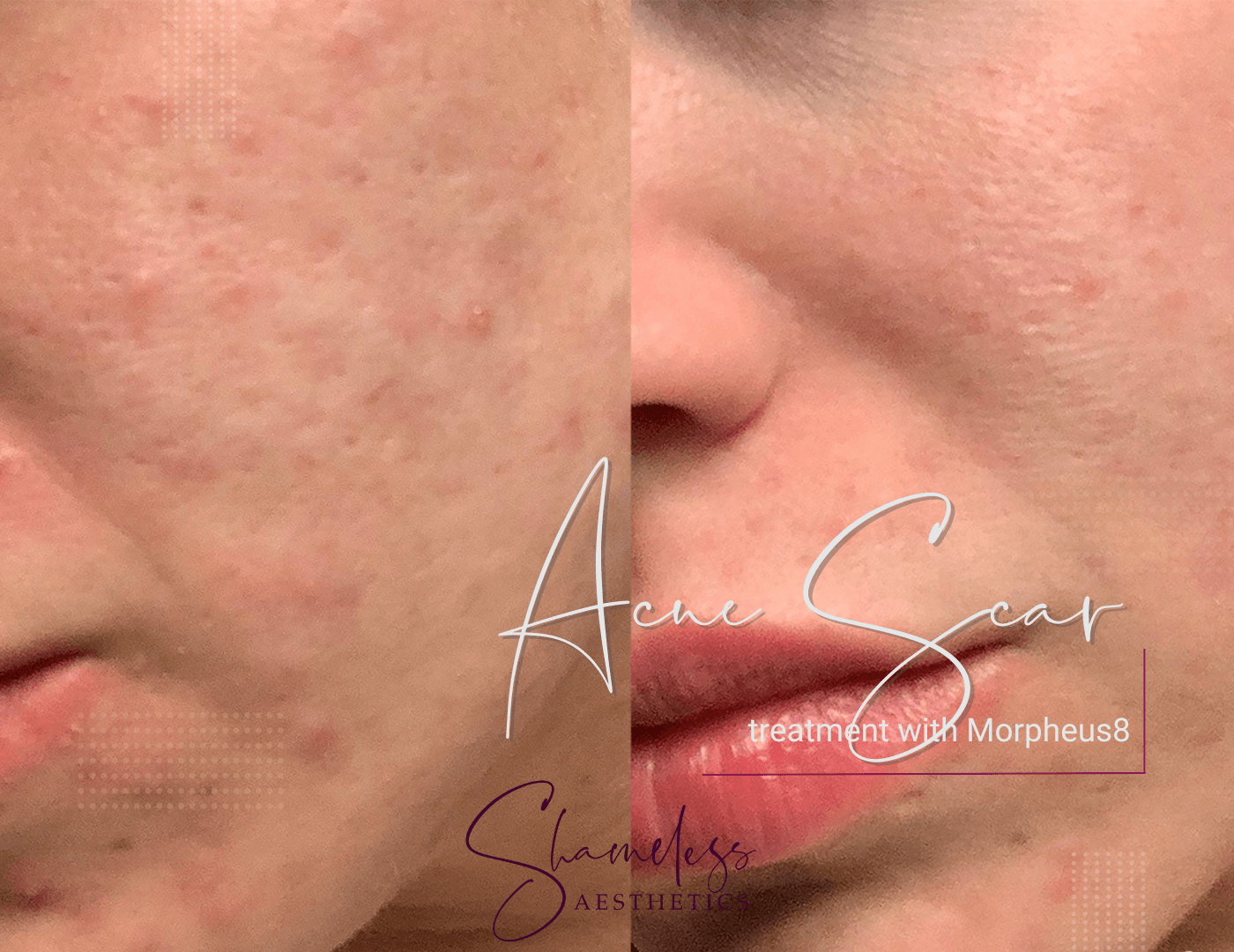The 6-Minute Rule for Acne Scars
The 6-Minute Rule for Acne Scars
Blog Article
The 2-Minute Rule for Acne Scars
Table of ContentsAn Unbiased View of Acne ScarsThe Best Guide To Acne ScarsIndicators on Acne Scars You Should KnowAcne Scars - TruthsThe Buzz on Acne Scars
Raised acne marks take place when the body generates also much collagen and develop a visible bump. As we age, acne scars become more visibly due to the fact that our skin sheds collagen.A person delays treatment for inflammatory acne. The longer you wait to look for therapy for acne, the higher the risk of scarring. A person selects at, presses or stands out acne. When popping an acne, you push germs deeper into pore. If we didn't require an additional factor why not to stand out a pimple, recognize that a mark could be the straight outcome of your actions.
Your hereditary makeup plays a large duty in just how much acne, and what type of acne you may create. As we stated earlier, there is no magic active ingredient to take acne scars away in the blink of an eye. There are treatments readily available that aid decrease the scarring over time.
To perform acne mark surgical treatment, a dermatologist might raise the scar, bringing it closer to the surface of the skin to make it much less noticeable. best for acne marks that are nearly level. These treatments consist of laser skin resurfacing, chemical peels and microdermabrasion. Resurfacing gets rid of layers of the skin, which enables the body to generate new skin cells.
The Facts About Acne Scars Uncovered
Lasers and various other light therapies can treat raised scars safely and successfully. (PDL) can aid reduce the itch and pain, reduce shade, and squash an elevated scar.
After 3 needling treatments, there was enhancement in the appearance of acne scars over time compared with the control group, with very little pain reported - acne scars. Therapy of acne scarring stays a restorative challenge, with treatment approaches that include a range of feasible alternatives.
Nonablative and ablative lasers can be made use of to either get rid of or bore skin in a fine identify pattern, with resulting neocollagenesis; only a portion of the skin is treated with each therapy, and a collection of treatments are required to treat the whole damaged surface area. It has actually been suggested that neocollagenesis and enhancement of acne scars can additionally be accomplished utilizing needle rollers, which use a mechanical, macroscopic approach to generate tiny skin and dermal perforations.
The Definitive Guide for Acne Scars
Like paint rollers, such devices can be moved back and forth along the skin. Needling as a possible treatment for acne scarring was introduced by Camirand and Doucet, who described use of a tattoo gun to abrade acne scars.
At each of these brows through, needling was carried out on the research study therapy area, and topical anesthetic was only massaged into the control area. Digital photos and adverse events (eg, infection, extended erythema, long term edema, serosanguineous drainage, bleeding, ulceration, disintegration, and coloring), including their period, resolution, intensity, partnership to the look at this web-site study treatment, and any alleviative activities taken, were taped before each therapy.

Pain degree was tape-recorded based on a 10-point visual analog scale after the procedure. Instantly after each therapy, mild manual pressure with gauze was requested 5 mins to control determine bleeding and serum secretion. The skin was soaked with saline swabs for an hour to help with hydration while the individuals were informed concerning the requirement for home care.
The Facts About Acne Scars Revealed
The device was then more cleansed by gas sterilization, stored in a shut package, and classified with the individual's name and the first treatment date on package till the next therapy. This sanitation process was complied with to make sure a high level of infection control in this study setup. The main end result measure was the quantitative worldwide scarring grading system, developed by Goodman and Baron.
2 blinded dermatologists (S.H. and M.P.) independently ranked participants' acne marks based upon standard electronic photos obtained at baseline and at the 3-month and 6-month follow-up check outs. Forced arrangement was used to integrate scores. Considered that this was an early pilot test, we considered it proper to consider acne marks jointly, not independently, by different morphologic subtypes (eg, rolling, boxcar, ice choice, and so forth).
and M.P.) did not join randomization or treatment and therefore were able to be blinded relating to assignment. Modifications in mean scar scores from standard to 3 and 6 months, respectively, were calculated for the therapy and control arms. Repeated-measures analysis of difference with pairwise comparisons with Sidak change were carried out to test whether the mark score varied on therapy type, time, or the interaction in between both.
The Wilcoxon signed rank test was utilized to analyze whether the difference in overall acne scar look was linked with treatment type. Twenty people consented, and 5 went down out before the very first therapy.
Fascination About Acne Scars
The needling treatment was not especially agonizing. Discomfort scores enhanced slightly over time (P =.01), with week 4 pain rankings (mean, 1.75; 95% CI, 0.90-2.60) dramatically greater than week 2 (mean, 0.78; this post 95% CI, 0.40-1.20) and week 0 (mean, 0.71; 95% CI, 0.40-1.00).
When asked to estimate the discomfort experienced during and in the days after their procedure, individuals commonly reported no pain (acne scars). Many participants were really completely satisfied with their treatment, replied this article yes when asked if they would certainly do this treatment once again to treat added marks, and said they would advise needling to their good friends
Moderate transient erythema and edema, which were not categorized as damaging events and therefore not officially tracked, were routinely observed by the investigator (M.A.) and reported by individuals after treatments. This study discloses some enhancement in acne marks after a collection of 3 treatments of needling. There is a statistically considerable renovation in such scars in the treatment group from standard to 6 months and no substantial renovation during this duration in the control team.

Report this page